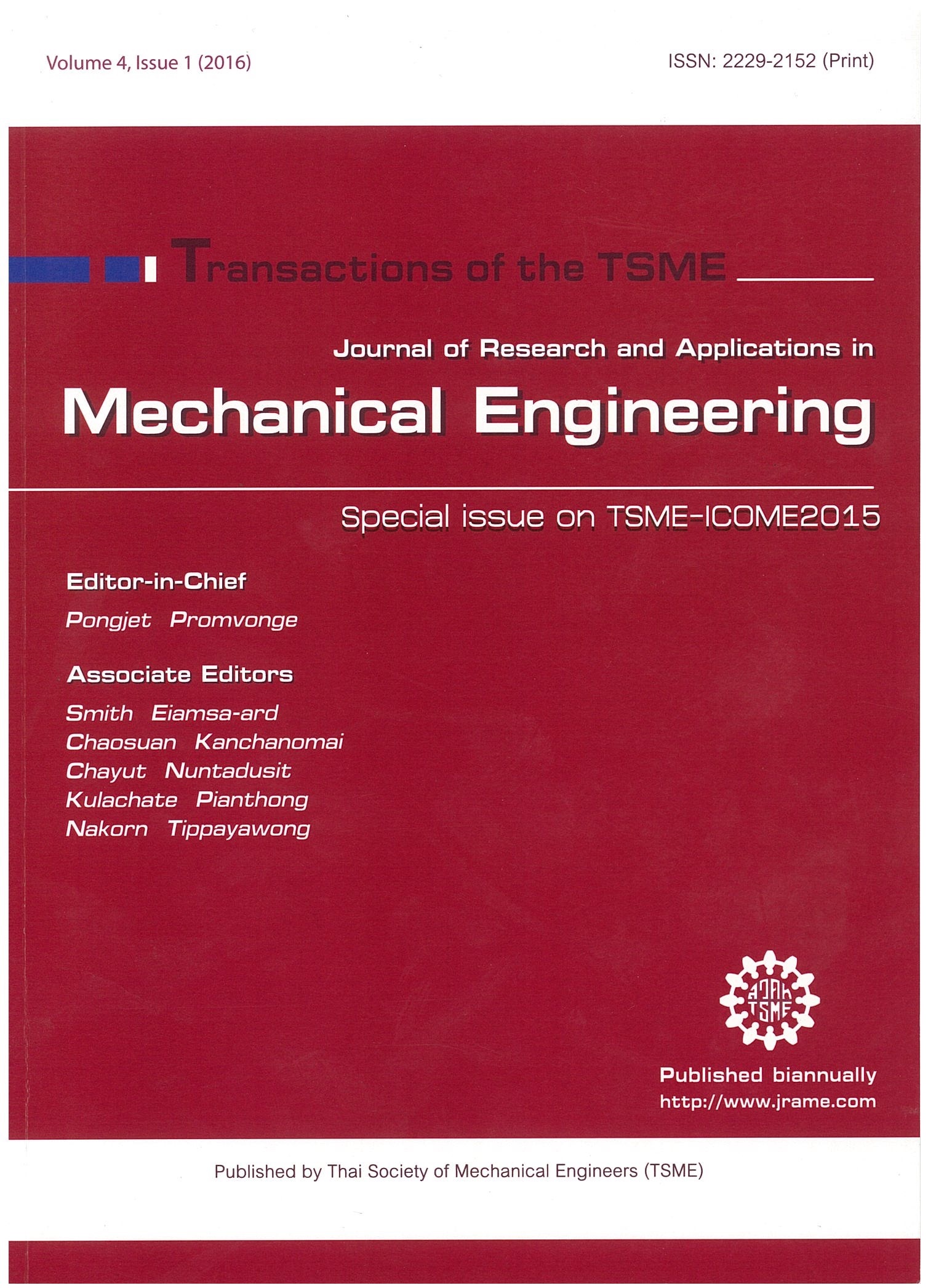Performance improvement of 5-kW household air-to-water heat pump
Main Article Content
Abstract
Heat pump can take the advantage in higher performance than other technologies such as electric heater for producing hot water in household. In theoretical, the heat pump can transfer heat 3-4 times larger than the electric energy consumed which can identify the performance of heat pump in term of Coefficient of Performance (COP). However, the development of 5-kW household air-to-water heat pump with simple system design from previous work can achieve the COP only 2.37 following the standard testing of EN255-3 when the test condition was adapted for Thailand’s weather at the ambient temperature of 25 oC and 70% relative humidit. Nevertheless it still has some margin for improving the COP. Therefore, the objective of this study was to improve the performance of household air-to-water heat pump to meet the target of 10% COP increase. In this study, two improvement methods were proposed based on vapor compression system analysis and the realistic with the low investment approaches. Two methods of performance improvement were the increase of degree of subcooling at the condenser outlet by increasing the heating surface area of condensing coil, and the increase of evaporator pressure accompanied with decreasing in the degree of superheat at the evaporator outlet by changing expansion device from capillary tube to thermostatic expansion valve. The step improvement of heat pump performance, i.e. existing system, increasing the heating surface of condensing coil, using thermostatic expansion valve, and the combination of increasing the heating surface of condensing coil and changing thermostatic expansion valve, were confirmed by testing in the control room under the standard with the same condition. The results shown that the combination of both modifications can efficiently improve the COP of heat pump up to 2.64 or 11.38% higher than the existing system. In the viewpoint of the investment cost, the improvement of the full modification invested about 368 THB per 1% COP increase which was more attractive than the other such as changing the type of compressor.
Article Details
This work is licensed under a Creative Commons Attribution-NonCommercial-ShareAlike 4.0 International License.
References
[2] Zarrella, A. Capozza, A. and Carli, M.D. Analysis of short helical and double U-tube borehole heat exchangers: A simulation-based comparision, Applied Energy, Vol. 112(12), 2013, pp. 358-370.
[3] Zarrella, A. Capozza, A. and Carli, M.D. Performance analysis of short helical borehole heat exchanger via integrated modeling of a borefield and a heat pump: A case study, Applied Thermal Engineering, Vol. 61(2), pp. 36-47.
[4] British Standard, Air conditioners, Liquid Chilling Packages and Heat Pump with Electrically Driven Compressor-Heating Mode, BS EN 255-3:1997.
[5] Wemhoner, C. and Afjei, T. Test procedure and seasonal performance calculation for residental heat pumps with combined space and domestic hot water heating, IEA HPP Annex 28, IEA, October 2005.
[6] Morrison, G.L., Anderson, T. and Behnia, M. Seasonal performance rating of heat pump water heater, Solar Energy, Vol. 76, 2004, pp. 147-152.
[7] Pottke, G., Hrnjak, P. Effect of condenser subcooling of the performance of vapor compression system: Experimental and Numerical Investigation, International Refrigeration and Air Conditioning Conference at Purdue, July 16-19, 2012.



